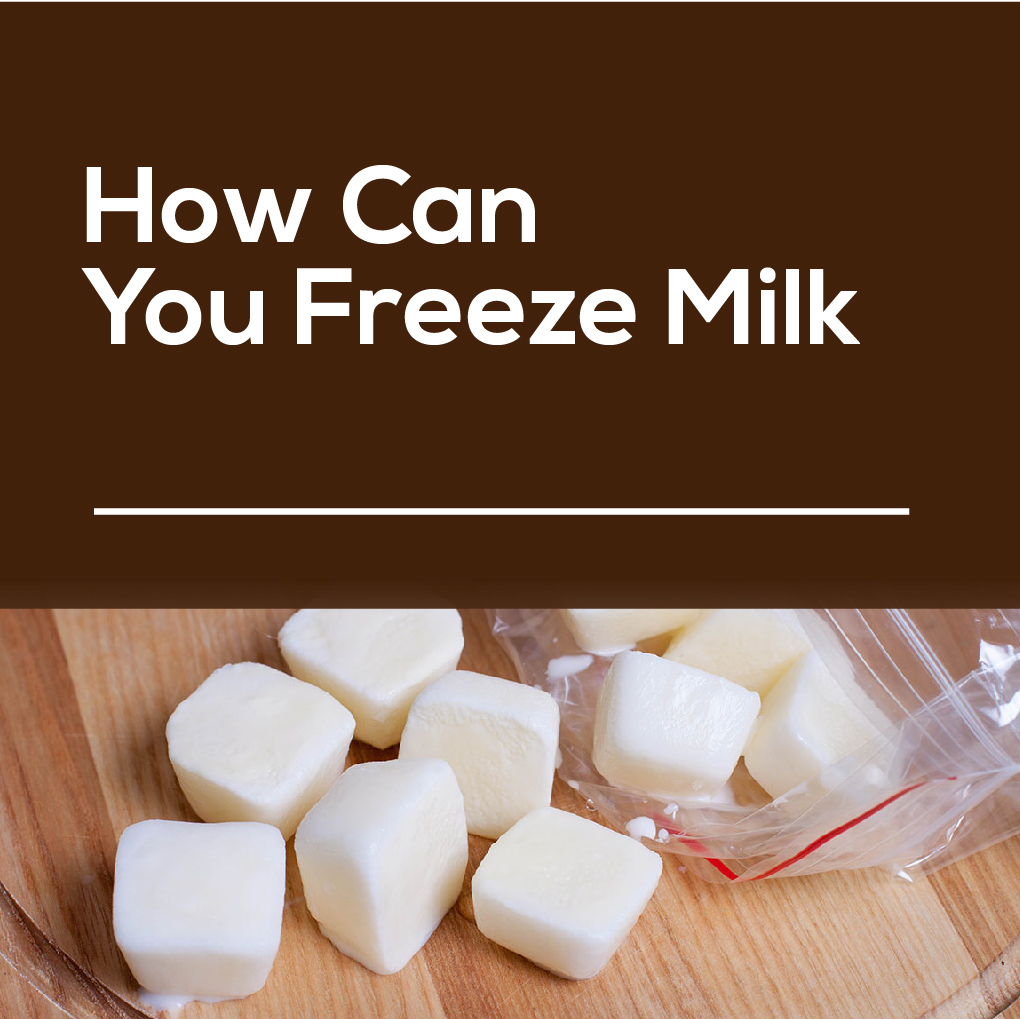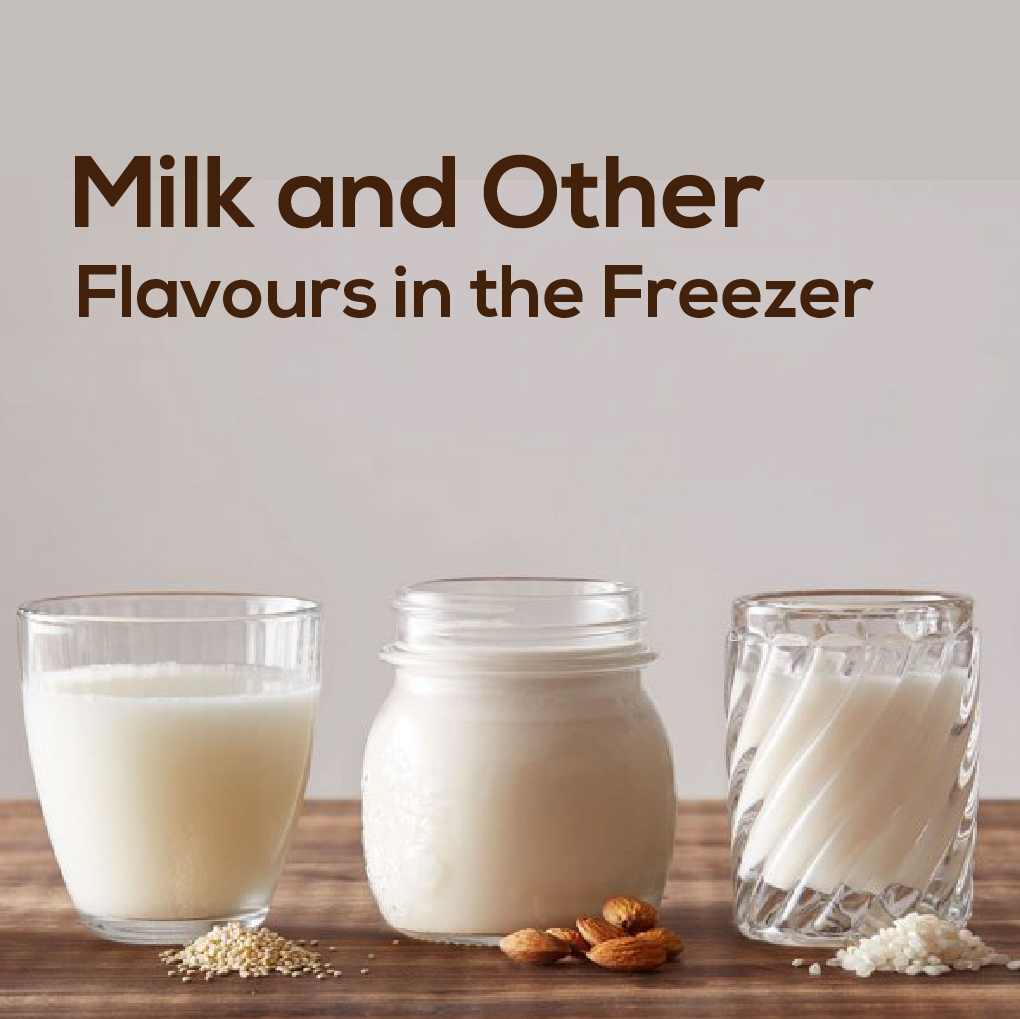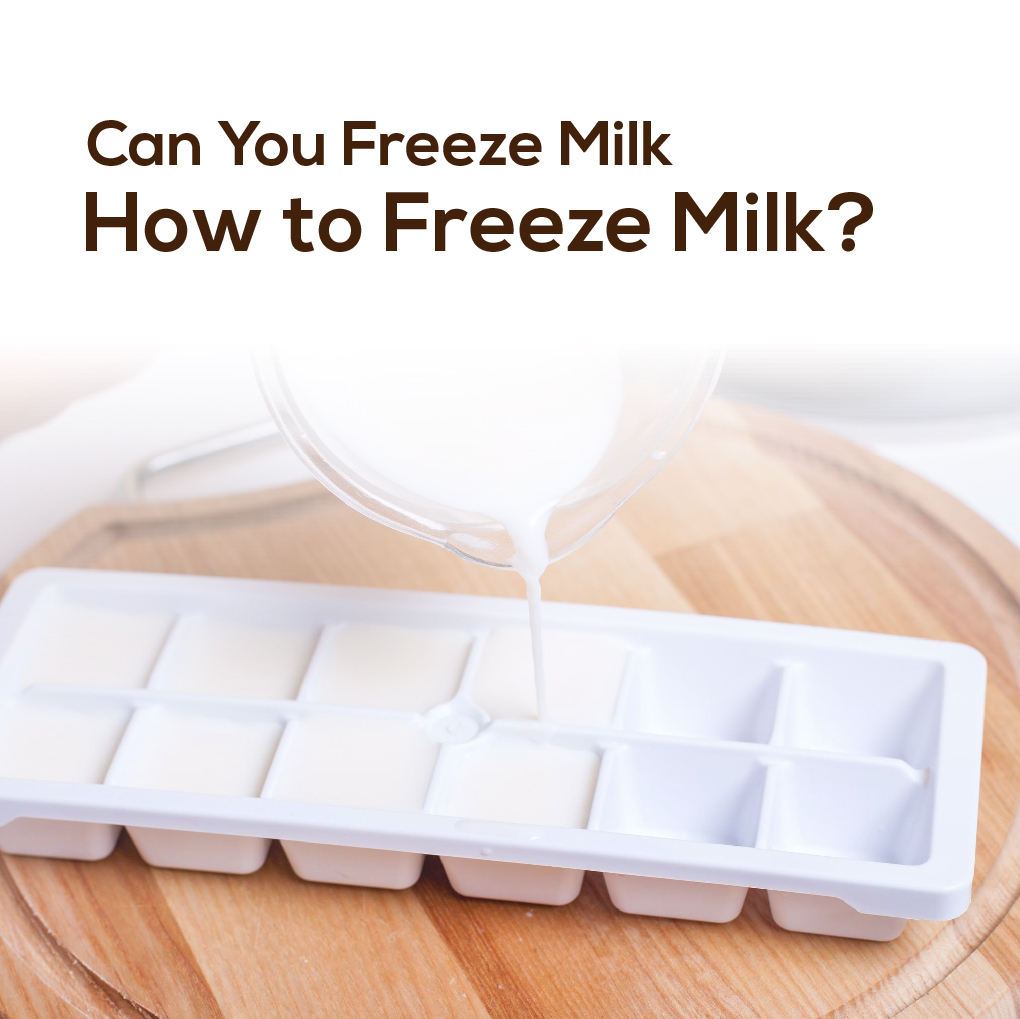Table of Contents
Can you freeze milk? Yes, you can freeze milk for a long time while maintaining its quality, defrost it in the fridge, and then use it within 3 to 4 days. Milk is hugely varied. It can be employed as a beverage or an ingredient in baking, cooking, and smoothies.
Also, there are several types of milk to suit nearly all dietary requirements, like goat’s milk, cow’s milk, and plant-based milk alternatives, including almond and soy milk. Though, you may query whether milk can be frozen. This guide reviews how to freeze and thaw several types of milk cautiously.

How Can You Freeze Milk
People can freeze milk in its initial container, so long as that container is plastic. If the milk arises in a glassful or cardboard box, shift it into a freezer-safe plastic container before you refrigerate. Milk will open when frozen, prompting glass or cardboard to break – and you don’t desire that mess in your freezer.
Because milk will fall apart, you mustn’t put a whole container of milk directly into the freezer. Leave 1-2 inches of headspace in every box, whether you’re freezing the full jug or you’re dividing it into individual containers. Then reseal the lid, wave vigorously, and put it in the freezer.
Write the date on the container with a pen. Milk will store in the freezer for up to 3 months, although it’s great to use it sooner rather than later, as it can grasp odors from food stocked nearby.
How to Thaw Milk
Milk will melt relatively fast, and a gallon should be available for consumption within a day (little containers will thaw more quickly). Prepare to use the milk within one week after it has melted. Store the frozen milk in the fridge. Swing well once thawed and before each use.
Do not melt milk at room temperature. Like any other milk, you will be endangering the taste of the milk you so diligently saved if it gets too warm. Thawing it gently and slowly in the freezer is your best bet. If you require to speed it up, load the sink with cold water and put the milk jug in it for a while. Displace the water when it heats to room temp; estimate every 30 minutes or so to be on the safe side. You might require to finish the thaw in the refrigerator, but this will supply you with a head start.
How Milk Changes After Freezing
Earlier frozen milk will hold all of its nutrients, but you may mark a texture change after it melts out. The fat may depart prudently, and the texture may become grainy – most people do not like drinking it straight. Here are a few suggestions and tricks to help you out:
- Store freezing a small amount of milk before sending to freezing a whole gallon to see if you enjoy it.
- Swing the milk firmly after it thaws and before each use. Alternatively, use an immersion blender (or kitchen tool) to combine the fats back into the milk.
- Reserve earlier-frozen milk for baking, cooking, and the family’s morning oatmeal and cereal. It also works excellent for smoothies.
Can you Freeze Non-Dairy Milk?
For the most bit, yes, you can cool non-dairy milk attempting the same steps you would for freezing dairy milk. Just remark that freezing and defrosting these will make them separate and get somewhat grainy, so only use defrosted non-dairy milk for stuff like smoothies or to cook with.

Milk and Other Flavours in the Freezer
Milk can be saved for up to 3 months. While views vary, a few months is an excellent, secure range for the freshest milk because milk can pick up tastes from your freezer. Even in that raw plastic jug, the milk can grasp the flavors of anything it is put near.
Seafood is the most significant culprit, and fishy milk is no fun. If you can, put the milk away from fish, meats, and other potentially pungent foods.
FAQs
[wps_faq style=”classic” question=”Q: Can you freeze milk in plastic bottles?”]A: People can freeze milk in its initial container, so long as that container is plastic. If the milk arises in a glassful or cardboard box, shift it into a freezer-safe plastic container before you refrigerate.[/wps_faq][wps_faq style=”classic” question=”Q: Does freezing milk change it?”]A: Since they are less in fat, skim and fat-free milk ice the best. While frozen milk maintains all of its primary nutrients, fat separation can provide the milk a grainy taste once thawed.[/wps_faq][wps_faq style=”classic” question=”Q: Can I freeze milk in paper cartons?”]A: First of all, don’t put milk in a paper carton. The answer to freezing milk is an air-tight container, and those paper milk cartons do not fit in the condition. Take a few clean, little plastic milk jugs (with lids) for freezing if you require to store milk that came in a carton.[/wps_faq][wps_faq style=”classic” question=”Q: Can you freeze milk twice?”]A: By the Dairy Council’s reports for Northern Ireland (DCNI), yes, it is feasible to freeze milk twice, but with particular anticipations. Initially, it is essential to freeze milk that is still within its’ use by’ date. If it’s been open for a few days, and you’re previously giving it an exciting sniff, it’s presumably too late.[/wps_faq][wps_faq style=”classic” question=”Q: Does frozen milk turn yellow?”]A: Refrigerating milk presents it turn yellowish due to the fat separating. Milk is virtually fat and water. Fat and Water freeze at varying temperatures, so separate when in the freezer. The beta carotene was stored in the milk fat, and refrigerating like churning, cuts down the cell walls and delivers the beta carotene, which then colors the end product a light yellow.[/wps_faq]
Conclusion
Most milk can be refrigerated. Though, milk should be shifted to an air-tight, freezer-safe box before freezing. Various types of milk will also separate and become grainy after being refrigerated, but this can quickly be fixed using a blender. Each type of milk should be thawed in the freezer to minimize the danger of bacterial growth. Using this guide, you can be confirmed that you are cooling and thawing your milk securely.

